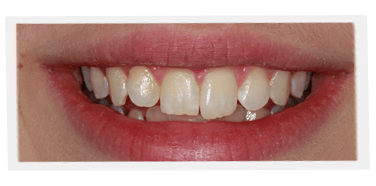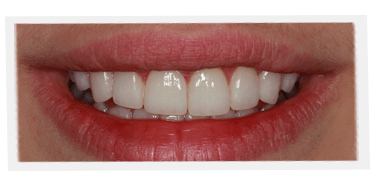
I am always asked about getting the best smile possible. It’s part of my job, of course, and there are many considerations when it comes to getting the best veneers or dental implants possible. Below is an excerpt from my book, A Guide to the Perfect Smile, to help you scratch the surface on some of the questions you may be asking in your quest for the perfect smile.
“Give me a smile – a perfect smile”
In most cases, dentistry these days can comply with this request. The process, however, is not as simple as entering a hair salon and asking for a Jennifer Aniston or George Clooney look. It’s true that a haircut is not just a haircut – to be good, it has to be right for the shape of the customer’s head, face, and type of hair. But this is not even remotely comparable with the complexity of a smile’s relationship to head, face, gums, teeth, jaws, distance between the pupils of the eyes – to mention just a few of the variables that come into play. The good news is that a transformed smile – transformed in a way that’s right for you – will do more for your looks and self-esteem than any Hollywood haircut ever could.
As this book will show, the search for the perfect smile can be elusive, for you the patient and dentists alike. The complexities can hamper you in trying to state what you want and can stump dentists in delivering on your requests. Hence this book, the purpose of which is to help both patients and dentists communicate more clearly and effectively on their journey together.
If you are a patient, this book will help you by:
- Giving you a basic understanding of what’s involved when dentists work with you to achieve your desired smile.
- Teaching you the language you need for discussing your wishes with your dentist.
If you are a dentist, it will help you by:
- Assisting you in interpreting your patients’ requests. This is a complicated process. It involves sorting out perceptions, measuring desires against facial and dental realities, and turning their subjective needs into objective reality.
- Defining smiles for you, in terms of patterns, types, and stages, so that you can know how to get the right smile for the right person. Your Guide to the Perfect Smile also explores the techniques and processes that can be sued in creating those smiles.
What changed in dentistry?
Things have changed a lot in society and in dentistry. What is motivating patients to undergo more comprehensive dental treatments these days is often not what’s in their mouth but what’s in their head. In traditional dentistry, patients had a tooth problem, and that’s what they concentrated on. Relating to their dentist was very simple: “Here’s my tooth problem,” they could say. And dentists could say back to them:” Here’s your tooth fix.” Patients today, however, are often looking at their smile as one of several things to fix in a more complex set of needs – whether to be more successful socially, express themselves more confidently at work, or just feel better about their image overall. With today’s cosmetically conscious populace and in particular the Boomers aging energetically and youthfully and the strong social trend toward pursuing a healthy image, patients today are often approaching “Freedom 55” not as a retirement stage but as a transitional stage. Putting their smile in check is just one of the tasks on their list. They no longer have a tooth problem requiring a tooth fix; they have a head problem requiring a head fix.
Before patients can feel that their dentist can fix their smile problem, they need to feel that their dentists cares about their head problem and can ensure that they will get the actual smile they are hoping for. This is so whether patients are looking for perfect pearly whites or a very natural but slightly worn look. In the face of these trends and patient desires, dentists should not try to be all things to all people. They may not be able to meet their patients’ head needs on their own. Both dentists and patients need a dental team as a support system as they collaborate on an extensive smiles fix.
In this book I attempt to capture the essence of my experience and teaching regarding smiles. In chapter one, I describe how the smile came to dentistry and the opportunities this has given dentists and their patients. In chapter two, I deal with smile patterns, stages, and types, and in chapters three and four with the aesthetic principles of nature and the principles of smile design. At that point, the question of how to actually create smiles based on this knowledge comes into play. Chapter five therefor examines specific smile problems and their solutions. Chapter six discusses what you need to know about the consultation process on your way to the perfect smile, and chapter seven closes the book with a photo gallery of before-and-after smiles and the stories that go with them.
It should be noted at the start of this book that the perfect smile you are searching for is not perfect in some ideal sense – it’s the perfect smile for you. I have purposefully chosen pictures that are realistic, showing the beauty of a smile despite some deviations from the ideal. I’ve introduced a way of quantifying these imperfections, giving you the ability to score smiles, and have scored some of them myself in a section at the end of chapter four.
I’ve also made a conscious attempt to make the book entertaining. First, I have used artwork that goes beyond clinical photography to enhance the points I’m making. At times the message may be cryptic, so have some fun figuring it out. Second, I have included anecdotes called “Smilelines.” These are meant to take you behind the scenes into the colorful world of aesthetic dentistry. You may want to skip these as you concentrate on the more factual information in the book. However, if that’s what you decide to do, I hope you will come back and read them on their own.”



